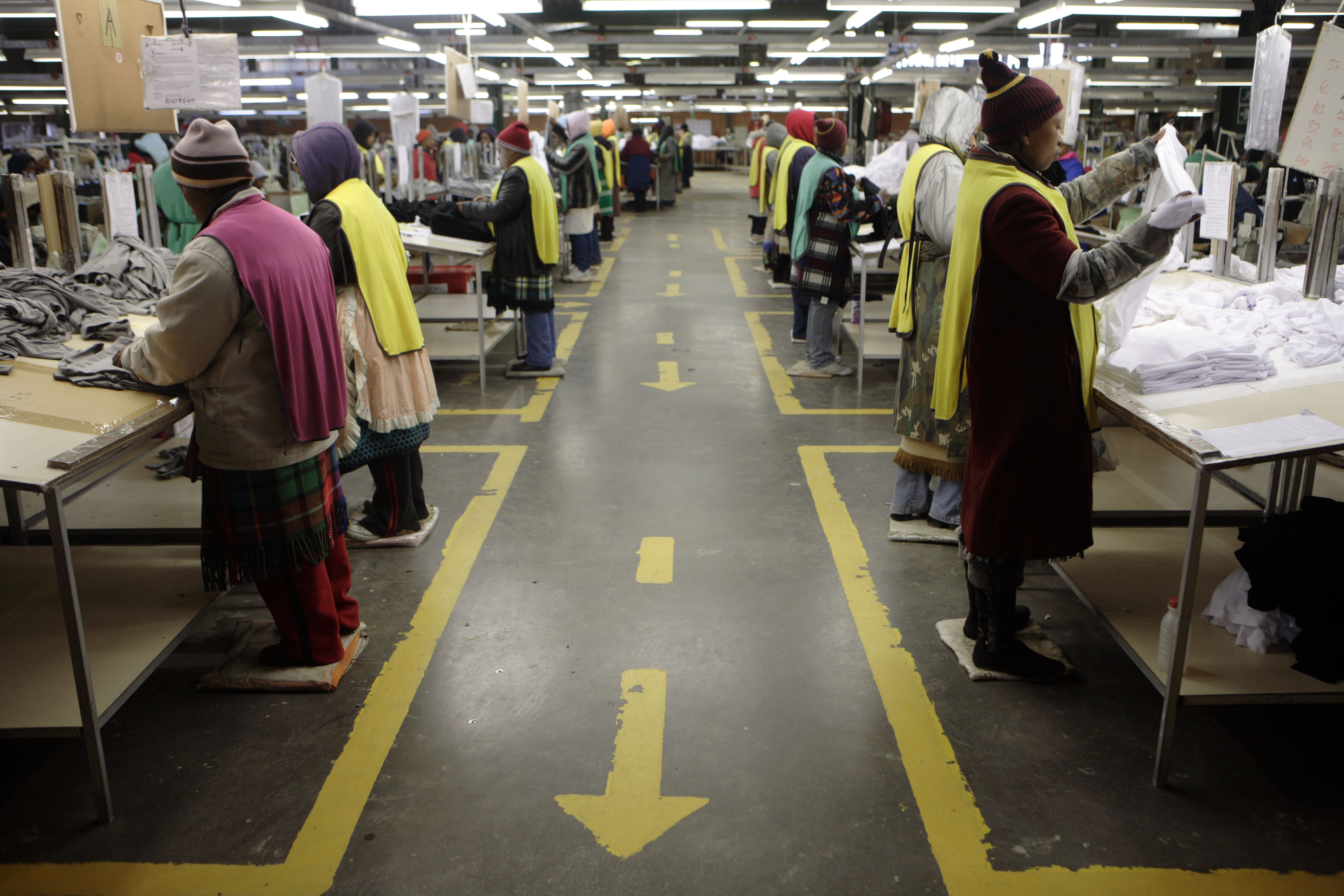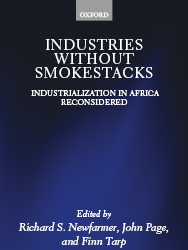Blog
‘Industrial’ policy in the 21st century
During the past week, I participated in two international conferences. The first was the WIDER Development Conference in Helsinki: Think development - Think WIDER. The second was in Kigali: Transforming Rwanda: Industrial Policy for the Next Decade, which was convened by Rwanda’s Minister of Trade and Industry with the support of the International Growth Centre (IGC), UNU-WIDER and the World Bank. I was struck by two messages that emerged from both conferences: first, industrial policy is back in the development policy mainstream, and second, our understanding of ‘industry’ is changing.
As Dani Rodrik wrote in a 2008 World Bank working paper, the economics profession has been reluctant to ‘normalize’ industrial policy as a legitimate part of the economist’s tool kit for supporting structural change in low-income countries. A decade later, industrial policy is finally moving away from the fruitless debate about ‘picking winners’ versus ‘levelling the playing field’.
Industrial policies and structural change
Increasingly, economists recognize that the market imperfections, on which theoretical arguments for industrial policies rest, are widespread in low-income countries. As a result, there is increased recognition that well-designed government actions (i.e., industrial policies) can contribute to improved economic outcomes. And, there is also a greater understanding that the private sector has a central role to play in formulating and implementing industrial policy.

Historically, manufacturing has driven economic transformation. The East Asian miracle was a manufacturing miracle. At the WIDER Development Conference, Nobel Laureate Joseph Stiglitz argued that ‘manufacturing is a victim of its own success: productivity growth exceeds the rate of increase in demand … [thus] it is unlikely that manufacturing export led growth will have the impact that it had in China and East Asia‘.
But what does the demise of the manufacturing-based export-led growth model mean for a country like Rwanda that is trying to push the pace of structural change? The consensus in Kigali was that, far from losing relevance, industrial policy in the 21st century needs to adapt to a changing world in which manufacturing is one of several potential drivers of high productivity, employment-intensive growth—in other words, of structural change.
Reconsidering the industries of 'industrial' policies
Today, new technologies have spawned a growing number of services and agri-businesses, including horticulture, that share many characteristics with manufacturing. They are tradable, have high productivity, and can absorb large numbers of moderately skilled workers. Like manufacturing, they benefit from technological change, productivity growth, scale, and agglomeration economies (where similar businesses cluster together to reduce production costs).
These are ‘industries without smokestacks’. In 2015, the Brookings Institution and UNU-WIDER set out to study their role in Africa. The results are forthcoming in our new book, Industries Without Smokestacks: Industrialization in Africa Reconsidered (Oxford University Press, 2018).
We found a new pattern of structural change emerging in Africa. Information and Communication Technologies (ICT)-based services, tourism, and transport are outpacing the growth of manufacturing in many African countries. Between 1998 and 2015, services exports grew more than six times faster than merchandise exports.
 Industries without smokestacks grew more rapidly than traditional sectors in two-thirds of African countries—and faster than manufacturing in half. Kenya, Rwanda, Senegal, and South Africa have vibrant ICT-based services sectors. Tourism is Rwanda’s largest single export, accounting for about 30% of total exports. Ethiopia, Ghana, Kenya, Rwanda, and Senegal all actively participate in global horticultural value chains, and Ethiopia and Kenya have become major cut flower exporters.
Industries without smokestacks grew more rapidly than traditional sectors in two-thirds of African countries—and faster than manufacturing in half. Kenya, Rwanda, Senegal, and South Africa have vibrant ICT-based services sectors. Tourism is Rwanda’s largest single export, accounting for about 30% of total exports. Ethiopia, Ghana, Kenya, Rwanda, and Senegal all actively participate in global horticultural value chains, and Ethiopia and Kenya have become major cut flower exporters.
In Kigali, I argued that, today, the central objective of industrial policy must be to spur the growth of high productivity, employment-intensive sectors, in both manufacturing and in industries without smokestacks. Our research indicates that, because tradable services, agro-industry, and horticulture share many firm characteristics with manufacturing, it is possible to develop a strategy for structural change anchored in three factors that have largely shaped the global distribution of manufacturing (see also Newman et al.).
- Investment climate
- Capacity to export
- Agglomeration
The three are inter-related and African governments will need to address them concurrently.
The balancing act
Infrastructure and skills are key elements of the investment climate. African firms pay a high productivity penalty because of poor infrastructure (see for example this report). High-speed data transmission is critical to exporting a wide range of services and especially to ICT-intensive exports. Adequate tourism-related infrastructure is badly needed and investments in trade logistics are critical to agro-processing and horticulture exports.
Skills also matter. Attempts to expand the ICT-enabled services industry have encountered workforce constraints. The skills needed to interact with tourists and provide back office services are also central to high-quality tourism. Exporting offers opportunities to acquire these capabilities and enhance productivity, but individual firms in Africa face significant barriers to exporting, not least, adequate information about export markets and opportunities.
 Much of the discussion in Kigali centered on Rwanda’s need for an ‘export push’—a package of trade and exchange rate policies, public investments, regulatory reforms, and institutional changes designed to increase the share of non-traditional exports in total economic output. Agro-processing, horticulture, tourism and ICT-based services benefit from agglomeration economies, just as manufacturing does.
Much of the discussion in Kigali centered on Rwanda’s need for an ‘export push’—a package of trade and exchange rate policies, public investments, regulatory reforms, and institutional changes designed to increase the share of non-traditional exports in total economic output. Agro-processing, horticulture, tourism and ICT-based services benefit from agglomeration economies, just as manufacturing does.
Governments can support agglomerations by concentrating investments in high-quality institutions and infrastructure in special economic zones (SEZs). Ethiopia is successfully pursuing such an approach in manufacturing, agri-business, and services. From the discussion in Kigali, it appears that Rwanda intends to follow Ethiopia’s lead.
Some countries in Africa may have the opportunity to transform through manufacturing. Others may turn to high value-added agriculture, agro-industry, and tradable services. Happily, it is not an either/or choice. To seize the day an effective industrial policy—geared to the realities of the 21st century—is essential.
For more insights into industrial policy in the 21st century, UNU-WIDER is producing both a short documentary film and a Massive Open Online Course (MOOC). Please stay tuned.
In text references
Escribano, A., J.L. Guasch, and J. Pena (2010). ‘Assessing the Impact of Infrastructure Quality on Firm Productivity in Africa: Cross-country Comparisons Based on Investment Climate Surveys from 1999-2005’. Policy Research Working Paper 5191. Washington DC: World Bank. Access: https://openknowledge.worldbank.org/handle/10986/19901
Newfarmer, R., J. Page and F. Tarp (2018) Industries Without Smokestacks: Industrialization in Africa Reconsidered. Oxford: Oxford University Press. Access: https://www.wider.unu.edu/publication/industries-without-smokestacks-2
Newman, C., J. Page, J. Rand, A. Shimeles, M. Soderbom, and F. Tarp (2016). Made in Africa: Learning to Compete in Industry. Washington DC: Brookings Institution Press. Access: https://www.wider.unu.edu/publication/made-africa
Rodrik, D. (2008). ‘Normalizing Industrial Policy’. Paper prepared for the Commission on Growth and Development. Washington DC: World Bank. Access: http://documents.worldbank.org/curated/en/524281468326684286/Normalizing-industrial-policy
Stern, N. (2001). A Strategy for Development. Beijing: China People’s University: Access: http://unpan1.un.org/intradoc/groups/public/documents/un-dpadm/unpan044450.pdf
Stiglitz, J.E. (2018). ‘From Manufacturing Led Export Growth to a 21st Century Inclusive Growth Strategy: Explaining the Demise of a Successful Growth Model and What to Do About It’. Paper presented at the UNU-WIDER conference Think Development Think WIDER, Helsinki, Finland. 15 September. Access: https://www.wider.unu.edu/sites/default/files/Events/PDF/Papers/Draft-paper-Juseph-Stiglitz-Sept2018.pdf
The views expressed in this piece are those of the author(s), and do not necessarily reflect the views of the Institute or the United Nations University, nor the programme/project donors.
 Join the network
Join the network

